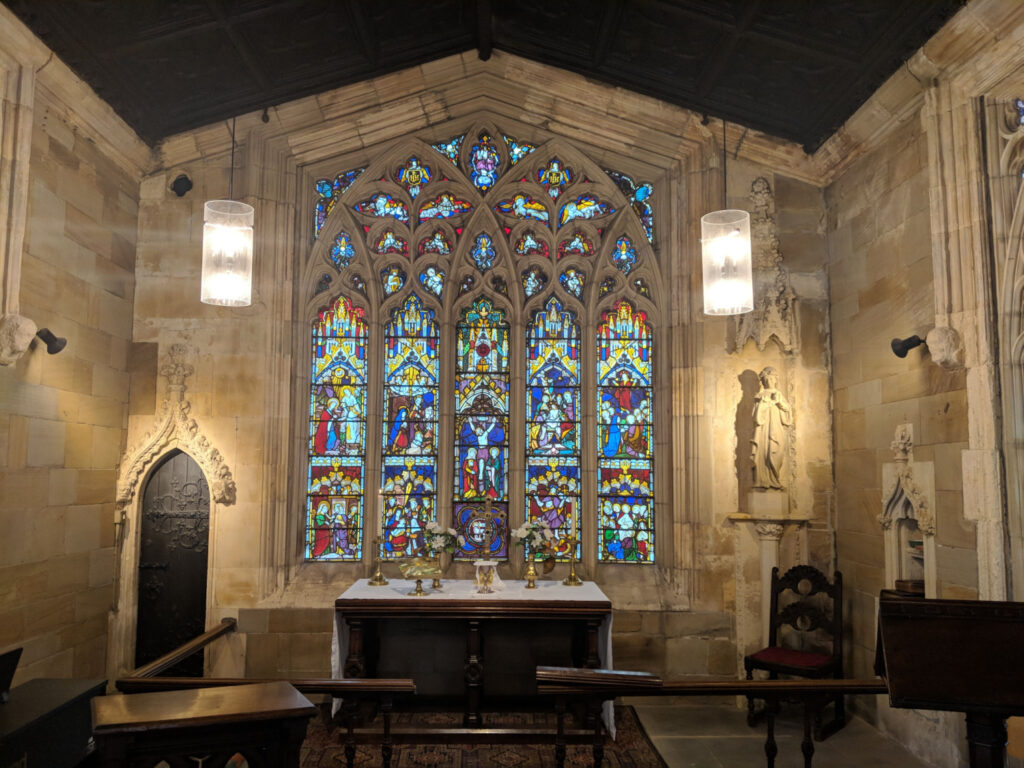Chantry chapels in medieval England were established in memory of a benefactor’s soul or for the repose of the soul of others. One of the rarest types of these buildings came in the form of bridge chantries. These were constructed for the spiritual needs of travellers or locals, with priests housed within them to give thanks for their safe arrival after long and often arduous journeys. Today, however, only a few survive, including the most notable and oldest which is our example: Wakefield, which sits perched atop the River Calder.

Constructed in 1342 by the city’s residents, it was a permanent structure where, inside, daily prayers were regularly said for the founders and their families’ souls, and thus was furnished with necessary plate, vestments, furniture, and richly carved and painted with the latest fashions in art and architectural design. Other chantries came in the form of free-standing enclosed tombs, sited in church aisles or in the nave. However, these are often the most opulent of the surviving chantries and relegated to the wealthiest of society. The middling sort afforded chantries at existing altars and gifted donations to guilds, etc. Occasionally, these chantries were only temporary, sometimes lasting just a few years. And, finally, the poor could simply bestow money for obits (requiem service) or lamps.
The primary intention behind chantries was to ensure a swift passage through purgatory towards heaven, therefore they were a financial investment on earth to ensure a positive experience in the afterlife. As such, when the 16th-century reformation came, many were torn down or defaced after they were outlawed in 1547, as they were perceived to exemplify the greed, opulence, and overindulgence of the ‘old faith’, and the subsequent Protestant rejection of the concept of purgatory.
Following Wakefield Chantry’s closure then selling in 1548, it was later bought by the Savile family and then given to the Trustees of the Wakefield Poor (now the Governors of the Wakefield Charities). It found itself housing many secular purposes as a result, serving as a cheesecake shop, a corn merchant’s office, a newsroom, and even a tailors. By the 19th century, degradation had set in and so the chapel was restored in the 1840s, when it also once again became an ecclesiastical site (though only functioned as the parish church of St Mary for six years). This was surprising given the work was designed by Sir George Gilbert Scott, who saw the upper portion of the building rebuilt, while the original facade was sold to the Norton family of Kettlethorpe Hall. But Scott chose the wrong stone (Caen and Bath) leading to several further restorations.
Serving then as a chapel of ease for St Mary’s until the 1960s, it is now under the care of the Dean and Chapter of Wakefield Cathedral, with the Friends of the Chantry Chapel forming in 1990 to ensure it is kept in a good state of repair and open to visitors.